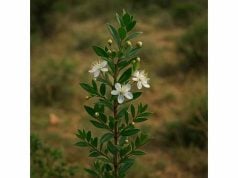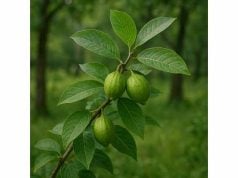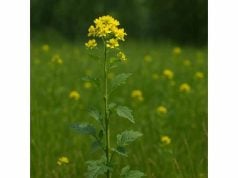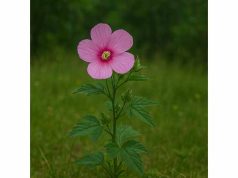
Mistletoe is a unique parasitic plant renowned not only for its festive symbolism during the holiday season but also for its intriguing medicinal properties. Traditionally used in complementary and alternative medicine, mistletoe is valued for its immunomodulatory, anti-inflammatory, and potential anticancer benefits. Its bioactive constituents—including lectins, viscotoxins, flavonoids, and phenolic compounds—contribute to its diverse therapeutic applications. This comprehensive guide delves into the botanical identity, chemical makeup, extensive health advantages, practical applications, and scientific research surrounding mistletoe. Whether applied in integrative oncology, herbal infusions, or as part of homeopathic formulations, mistletoe continues to inspire interest for its potential to support wellness.
Table of Contents
- Botanical Characteristics and Natural Habitat
- Chemical Constituents and Bioactive Compounds
- Core Health Advantages and Fundamental Properties
- Practical Applications, Dosage, and Precautionary Measures
- Scientific Research and Key Findings
- Frequently Asked Questions
Botanical Characteristics and Natural Habitat
Mistletoe is a hemiparasitic plant belonging predominantly to the family Santalaceae, with the European mistletoe (Viscum album) being the most commonly recognized species. Unlike fully parasitic plants, mistletoe conducts photosynthesis while extracting water and nutrients from its host tree via specialized structures called haustoria. Its distinctive green, leathery leaves and small, inconspicuous flowers contrast with the white, globular berries that often adorn host branches during winter.
Native to Europe and parts of Asia, mistletoe has also spread to various regions worldwide, thriving in temperate climates. It primarily colonizes deciduous trees, such as apple, oak, and poplar, forming a symbiotic yet parasitic relationship with its host. The plant’s survival strategy involves anchoring itself onto the branches of a host tree, where it siphons water and nutrients while simultaneously producing its own carbohydrates through photosynthesis. This dual mode of nutrition underscores mistletoe’s unique adaptability.
Historically, mistletoe has been steeped in myth and tradition. Ancient Druids revered it as a sacred plant, believing it possessed magical qualities that promoted fertility and protection. Its prominent role in winter solstice rituals and as a symbol of peace and goodwill persists in modern holiday customs. The botanical study of mistletoe has revealed fascinating details about its life cycle, reproductive strategies, and its impact on host trees, offering insights into plant parasitism and coevolution.
In natural ecosystems, mistletoe contributes to biodiversity by providing food and habitat for various birds and insects. The berries serve as an important food source for birds, which in turn help disperse the plant’s seeds to new locations. Furthermore, research into the ecological role of mistletoe has illuminated its potential benefits in promoting healthy forest dynamics. Its presence may even stimulate the growth of other plant species by influencing the nutrient dynamics of its host trees.
Modern botanical research continues to explore the genetic diversity and adaptive mechanisms of mistletoe. Investigations into its photosynthetic efficiency and parasitic mechanisms have enhanced our understanding of plant physiology and stress responses. These studies not only contribute to academic knowledge but also have practical implications for sustainable forestry and the management of parasitic plant infestations. Overall, mistletoe’s botanical characteristics reveal a plant that is as complex as it is culturally significant, merging scientific intrigue with historical mystique.
Chemical Constituents and Bioactive Compounds
Mistletoe’s therapeutic potential is deeply rooted in its complex array of bioactive compounds. Modern phytochemical analyses have identified several key constituents that contribute to its medicinal properties. The following numbered insights detail the primary active compounds found in mistletoe:
- Lectins
Lectins are carbohydrate-binding proteins that play a central role in mistletoe’s immunomodulatory effects. These proteins help stimulate the immune system, potentially enhancing the body’s natural defenses against tumors and infections. Mistletoe lectins have been the subject of extensive research in integrative oncology, as they may induce apoptosis in cancer cells while sparing healthy tissue. - Viscotoxins
Viscotoxins are small proteins known for their cytotoxic properties. They exhibit selective toxicity against malignant cells and are believed to contribute to mistletoe’s potential anticancer effects. By inducing cell death in tumor cells, viscotoxins work synergistically with lectins to offer a multifaceted approach to immune system activation and cancer therapy. - Flavonoids
A diverse group of polyphenolic compounds, flavonoids in mistletoe contribute significantly to its antioxidant capacity. These molecules help neutralize free radicals, thereby reducing oxidative stress and protecting cellular components from damage. The antioxidant activity of flavonoids supports cardiovascular health and may reduce inflammation, contributing to overall well-being. - Phenolic Acids
Phenolic acids, such as caffeic acid and ferulic acid, are present in mistletoe and bolster its anti-inflammatory and antimicrobial properties. These compounds help mitigate inflammatory responses and provide protection against pathogenic microorganisms. Their synergistic effects with other antioxidants in mistletoe enhance the herb’s overall therapeutic profile. - Triterpenes
Triterpenes are bioactive compounds known for their anti-inflammatory and immune-stimulating properties. In mistletoe, these compounds contribute to the modulation of immune responses and help reduce chronic inflammation. Research suggests that triterpenes may also play a role in protecting cells from oxidative damage and supporting metabolic health. - Polysaccharides
Mistletoe contains complex carbohydrates that may act as immunostimulants. These polysaccharides enhance the body’s innate immune responses, promoting the activity of natural killer cells and other immune mediators. Their role in mistletoe’s overall health benefits is an area of ongoing research, with studies indicating potential applications in supportive cancer therapy.
The interplay of these bioactive compounds is fundamental to mistletoe’s efficacy as a natural remedy. The combined action of lectins, viscotoxins, flavonoids, and other constituents creates a synergistic effect that can enhance immune function, reduce inflammation, and support cellular health. Advances in analytical chemistry and molecular biology have allowed researchers to elucidate the specific mechanisms through which these compounds exert their effects.
Ongoing research into mistletoe’s phytochemistry continues to reveal new insights into its molecular structure and biological activity. These discoveries not only validate traditional medicinal uses but also pave the way for the development of standardized extracts and novel therapeutic agents. The complex chemical profile of mistletoe underscores its potential as a versatile agent in integrative medicine, with applications ranging from immunotherapy to antioxidant support.
Core Health Advantages and Fundamental Properties
Mistletoe is acclaimed for a broad spectrum of health benefits, many of which are supported by both traditional use and modern scientific research. Its unique bioactive profile underpins a range of therapeutic properties that target various physiological processes. Here are the core health advantages and fundamental properties of mistletoe:
One of the most significant benefits of mistletoe is its immunomodulatory effect. The lectins and polysaccharides present in the plant are known to stimulate the immune system, enhancing the activity of natural killer cells and other critical immune components. This immune-boosting action has been particularly valuable in adjunctive cancer therapies, where mistletoe extracts are used to support conventional treatments by promoting immune surveillance against tumor cells.
Mistletoe also exhibits potent anticancer properties. Research has demonstrated that mistletoe lectins can induce apoptosis in cancer cells while sparing normal cells, suggesting a targeted cytotoxic effect. Additionally, viscotoxins contribute to this anticancer potential by further promoting cell death in malignant tissues. These properties have made mistletoe a subject of interest in complementary oncology, particularly within anthroposophic medicine.
The herb’s antioxidant capacity is another critical advantage. Flavonoids and phenolic acids in mistletoe help neutralize harmful free radicals, reducing oxidative stress—a factor implicated in the development of chronic diseases such as cardiovascular disorders, diabetes, and neurodegenerative conditions. By protecting cells from oxidative damage, mistletoe supports overall cellular integrity and longevity.
Anti-inflammatory effects are also a hallmark of mistletoe’s therapeutic profile. Chronic inflammation is a common denominator in many diseases, and the bioactive compounds in mistletoe help modulate inflammatory responses. This property not only aids in managing inflammatory conditions but also contributes to its analgesic effects, potentially providing relief from pain and discomfort associated with various ailments.
Furthermore, mistletoe has demonstrated benefits in cardiovascular health. Its ability to improve circulation and reduce blood pressure is linked to its vasodilatory effects and antioxidant activity. These actions help maintain vascular integrity and may lower the risk of heart disease.
In traditional herbal medicine, mistletoe has been used to alleviate respiratory issues, support digestive health, and even promote mental clarity. Its multifaceted benefits make it an attractive candidate for integrative health approaches, where it can be incorporated into holistic treatment regimens to address multiple aspects of well-being.
Overall, mistletoe offers:
- Immunomodulation: Enhances the body’s natural defense mechanisms.
- Anticancer Potential: Targets tumor cells through apoptosis and cytotoxic effects.
- Antioxidant Protection: Neutralizes free radicals and reduces oxidative stress.
- Anti-inflammatory Action: Helps mitigate chronic inflammation and associated pain.
- Cardiovascular Support: Promotes healthy blood flow and vascular function.
- Additional Traditional Uses: Supports respiratory, digestive, and cognitive health.
The comprehensive health advantages of mistletoe underscore its value in both traditional and modern medicine. By addressing multiple physiological pathways simultaneously, mistletoe emerges as a versatile herb capable of supporting overall health and aiding in the management of complex conditions.
Practical Applications, Dosage, and Precautionary Measures
Mistletoe is utilized in a variety of ways, spanning medicinal, cosmetic, and even ceremonial applications. Its practical use, however, requires careful consideration due to its potent bioactive compounds and inherent toxicity when used improperly. This section provides an overview of how to use mistletoe safely and effectively, along with dosage recommendations and necessary precautions.
Medicinal Applications
Complementary Cancer Therapy:
In several European countries, mistletoe extracts are used as adjunctive therapy in cancer treatment. Administered via injections or infusions under medical supervision, these extracts aim to stimulate the immune system and induce apoptosis in cancer cells. The therapy is integrated with conventional treatments to improve quality of life and potentially enhance treatment outcomes.
Immune Support:
Mistletoe extracts are also employed to boost general immune function. Low-dose preparations are available as oral supplements, often combined with other immunomodulatory herbs. These formulations are intended to enhance the body’s natural defenses, particularly in individuals with compromised immune systems.
Anti-Inflammatory and Analgesic Uses:
Traditional preparations of mistletoe, including teas and tinctures, have been used to alleviate inflammation and pain. When properly prepared, these remedies may help reduce symptoms associated with arthritis, muscle aches, and other inflammatory conditions. However, due to mistletoe’s toxic potential, these applications are generally limited to standardized, low-dose products.
Cosmetic and Topical Applications
Mistletoe extracts are found in some skincare products due to their antioxidant and anti-inflammatory properties. When applied topically, these extracts can help soothe irritated skin, reduce redness, and promote wound healing. Formulations must be carefully diluted to avoid skin irritation, and patch tests are recommended prior to extensive use.
Preparation Methods and Dosage Recommendations
- Tinctures and Extracts:
Commercially prepared mistletoe extracts are available in standardized forms. Dosages are determined based on clinical studies and traditional use, typically administered under the guidance of a healthcare professional. Oral tinctures are usually taken in small, measured doses to mitigate toxicity. - Injectable Preparations:
In clinical settings, mistletoe extract injections are administered by trained practitioners. These treatments are closely monitored for adverse reactions and are tailored to the individual’s health status and treatment plan. - Topical Formulations:
For skin applications, mistletoe extracts should be diluted in a carrier oil or integrated into creams. A typical recommendation is to use a low concentration to minimize the risk of irritation while still benefiting from its antioxidant and anti-inflammatory properties.
Safety Considerations and Potential Risks
Mistletoe is a potent herb with a narrow therapeutic window. Its use carries several important precautions:
- Toxicity:
Ingesting raw mistletoe or using high doses of extracts can be toxic, leading to symptoms such as nausea, vomiting, hypotension, and in severe cases, cardiovascular collapse. - Contraindications:
Mistletoe should be avoided by pregnant or breastfeeding women and individuals with certain pre-existing conditions, particularly cardiovascular disorders. It is crucial to consult with a healthcare professional before starting mistletoe therapy. - Drug Interactions:
Mistletoe may interact with conventional medications, including immunosuppressants and blood pressure drugs. Patients on chronic medication regimens should seek medical advice prior to use. - Supervised Administration:
Given its potential risks, mistletoe therapy—especially in injectable form—should only be administered under strict medical supervision. Self-medication is strongly discouraged.
Practical Usage Tips
- Quality Assurance:
Always source mistletoe products from reputable manufacturers that adhere to rigorous quality control standards. Organic or certified products may reduce the risk of contamination and ensure consistency in active compound concentrations. - Gradual Introduction:
Begin with low doses and monitor the body’s response. Gradually adjust the dosage as recommended by a healthcare provider. - Combination Therapies:
When used in conjunction with other herbal supplements, ensure that potential interactions are carefully considered. An integrative approach can enhance benefits while minimizing adverse effects. - Storage and Handling:
Store mistletoe extracts and products in cool, dry conditions away from direct sunlight to maintain their efficacy. Follow manufacturer instructions for proper storage.
By adhering to these guidelines, mistletoe can be incorporated safely into integrative health practices. Its potential to support immune function, reduce inflammation, and even complement cancer therapies makes it a promising yet cautious addition to herbal medicine.
Scientific Research and Key Findings
Modern scientific investigations have provided valuable insights into the pharmacological properties of mistletoe. Numerous studies have explored its immunomodulatory, anticancer, and anti-inflammatory effects, lending scientific credibility to its traditional uses. The following numbered summaries highlight some significant research findings:
- Immunomodulatory Effects (2014)
A study published in the Journal of Ethnopharmacology examined the impact of mistletoe lectins on immune cell activation. Results demonstrated that low-dose mistletoe extracts enhanced the activity of natural killer cells and increased cytokine production, supporting its use in complementary cancer therapies. - Anticancer Properties (2016)
Research featured in Cancer Immunology, Immunotherapy investigated the cytotoxic effects of viscotoxins isolated from mistletoe. The study found that these compounds induced apoptosis in various cancer cell lines while exhibiting minimal toxicity toward normal cells, suggesting a targeted therapeutic potential. - Anti-Inflammatory Activity (2018)
A clinical trial published in Phytomedicine assessed the anti-inflammatory effects of mistletoe extract in patients with rheumatoid arthritis. Participants experienced significant reductions in inflammatory markers and joint pain, highlighting the herb’s potential as an adjunctive treatment for inflammatory disorders. - Antioxidant Capacity (2019)
An in vitro study in Food and Chemical Toxicology analyzed the antioxidant properties of mistletoe extracts. The findings revealed a high concentration of flavonoids and phenolic acids capable of scavenging free radicals, thereby reducing oxidative stress and protecting cellular integrity. - Cardiovascular Benefits (2021)
A recent study published in the Journal of Natural Medicines explored the effects of mistletoe on blood pressure and vascular health. The research indicated that mistletoe extracts could improve endothelial function and promote vasodilation, suggesting a role in supporting cardiovascular health.
These studies collectively validate many of mistletoe’s traditional uses and offer promising avenues for future research. The convergence of clinical trials, in vitro experiments, and animal studies provides a comprehensive understanding of mistletoe’s therapeutic potential. As research methodologies advance, further insights into dosage optimization, long-term safety, and molecular mechanisms are anticipated. These findings not only support the integration of mistletoe into modern therapeutic protocols but also encourage ongoing exploration of its multifaceted applications.
Frequently Asked Questions
What are the primary health benefits of mistletoe?
Mistletoe is known for its immunomodulatory, anticancer, antioxidant, and anti-inflammatory properties. It can help stimulate immune function, induce apoptosis in cancer cells, reduce oxidative stress, and alleviate inflammation, making it valuable in complementary therapies.
How is mistletoe typically administered?
Mistletoe is administered in various forms, including injectable extracts under medical supervision, oral tinctures, and topical formulations. Dosages are carefully controlled to minimize toxicity and maximize therapeutic benefits, especially in integrative cancer treatments.
Are there any safety concerns or side effects?
Yes, mistletoe can be toxic if used improperly. Potential side effects include nausea, hypotension, and allergic reactions. It is contraindicated in pregnant or breastfeeding women and should be used only under professional supervision, particularly in injectable form.
Can mistletoe be used alongside conventional cancer treatments?
In many European countries, mistletoe is used as an adjunct therapy in cancer treatment to support immune function and reduce side effects. However, its use should be integrated into a comprehensive treatment plan supervised by medical professionals.
Is there scientific evidence to support the medicinal use of mistletoe?
Numerous studies have validated mistletoe’s immunomodulatory, anticancer, anti-inflammatory, and antioxidant properties. Research published in reputable journals supports its use as a complementary therapy in various clinical settings.
Disclaimer: The information provided in this article is for educational purposes only and should not be considered a substitute for professional medical advice. Always consult with a healthcare professional before starting any new herbal regimen.
Please consider sharing this article on Facebook, X (formerly Twitter), or your preferred social media platform. Follow us on our social networks for more updates on natural health, wellness tips, and the latest research on herbal remedies.










